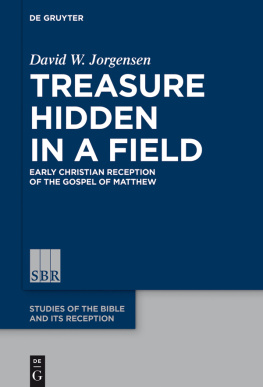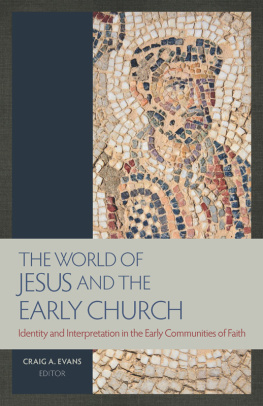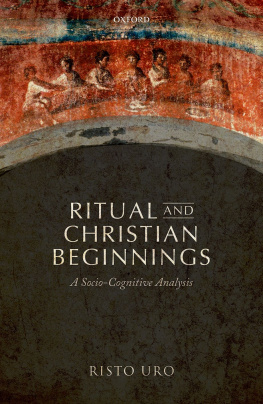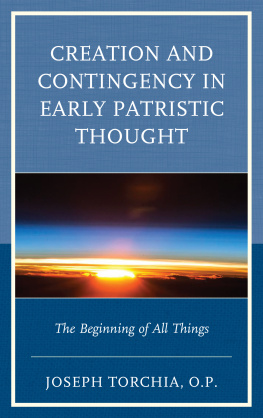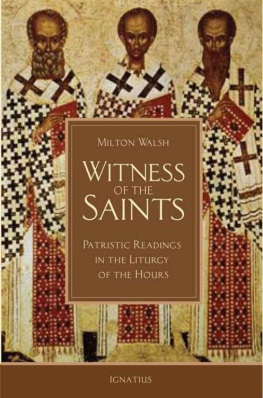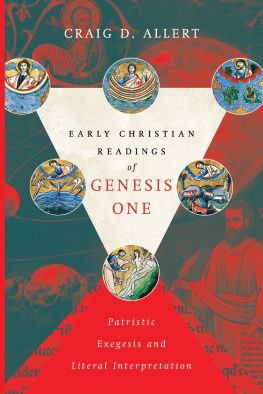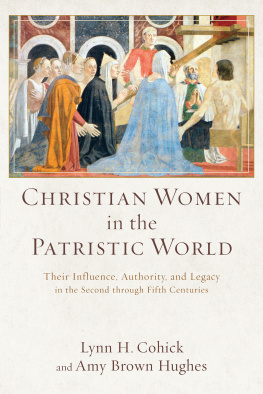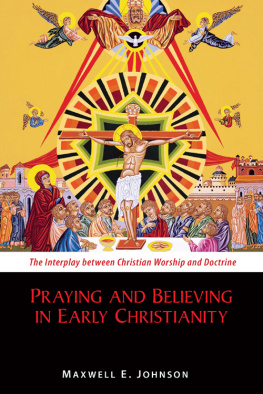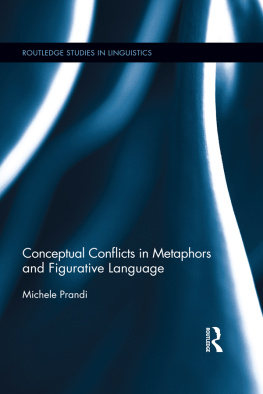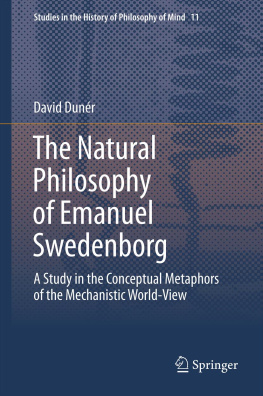Contents
Guide

Aleksander Gomola
Conceptual Blending in Early Christian Discourse
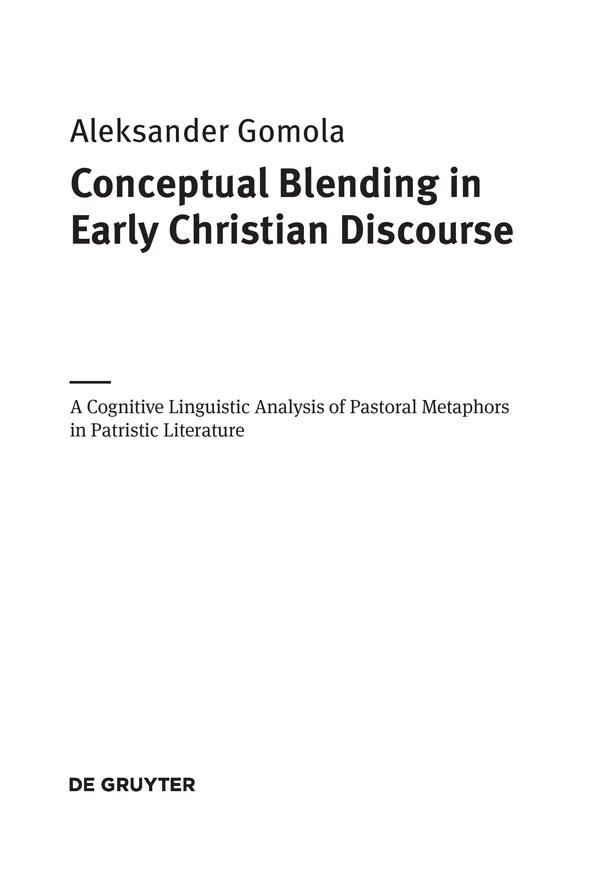
Produced with the support of Jagiellonian University in Krakw, Poland.
ISBN 978-3-11-058297-0
e-ISBN (PDF) 978-3-11-058063-1
e-ISBN (EPUB) 978-3-11-058204-8
Library of Congress Cataloging-in-Publication Data
A CIP catalog record for this book has been applied for at the Library of Congress.
Bibliografic information published by the Deutsche Nationalbibliothek
The Deutsche Nationalbibliothek lists this publication in the Deutsche Nationalbibliografie; detailed bibliografic data are available on the Internet at http://dnb.dnb.de.
2018 Walter de Gruyter GmbH, Berlin/Boston
Cover image: photograph by Petar Miloevi. The Good Shepherd; Mosaic in the Mausoleum of Galla Placidia. Used with permission.
www.degruyter.com
Acknowledgments
My sincere gratitude goes to the people at De Gruyter for their professional help in preparing this monograph. Sophie Wagenhofer took this project under her wings and provided assistance in its initial phase. Olena Gainulina and her team prepared the conceptual blend diagrams that are discussed in this monograph. And Aaron Sanborn-Overby provided excellent advice, constant support, meticulous revising of my footnotes and bibliography, and the idea for the cover design of this book.
I would also like to thank Christopher Walker for a careful proofreading of my manuscript, my anonymous Reviewers for all comments and suggestions and Jagiellonian University in Krakw, Poland, for financial support for this publication.
My final and deepest thanks go to my family for their patience and support during my work on this monograph.
List of Tables
List of Figures
Abbreviations
| ANF | The Ante-Nicene Fathers , ed. Alexander Roberts and James Donaldson, 18851887 (Grand Rapids, MN: Eerdmans, 19511965) |
| CSEL | Corpus Scriptorum Ecclesiasticorum Latinorum (Vienna: Tempsky, 1866) |
| CCSL | Corpus Christianorum Series Latina (Turnhout: Brepols, 1953) |
| FC | The Fathers of the Church. A New Translation (Washington, D.C.: Catholic University of America Press 1947) |
| LSJ | Henry George Liddell and Robert Scott, A Greek-English Lexicon , rev. Henry S. Jones, 9 th ed. (Oxford: Clarendon Press, 1996) |
| NPNF | A Select Library of the Nicene and Post-Nicene Fathers in 2 series , ed. Philip Schaff and Henry Wace, 18861889 (Grand Rapids, MN: Eerdmans, 1969) |
| PG | Patrologiae graeca , ed. Jacques P. Migne (Paris, 18571886) |
| PL | Patrologiae latina , ed. Jacques P. Migne (Paris, 18441864) |
| WSA | The Works of Saint Augustine. A Translation for the 21st Century , ed. Boniface Ramsey and John E. Rotelle (Hyde Park, NY: New City Press, 1990) |
Introduction
At the end of Martin Scorseses Silence , a film that tells the story of the persecution of Christians in 17th-century Japan, the directors dedication appears on the screen, reading: For Japanese Christians and their pastors . Scorseses depiction of the Christian community in shepherding terms seems so obvious to us that we barely notice it (and that is why I added italics to his dedication). Yet it should puzzle us, since out of all the major world religions only Christian communities are flocks led by shepherds or pastors. There are no pastors or sheep in Islam, Buddhism or modern Judaism.
The fact that more than two billion people in the world (and especially more than a billion Catholics) perceive themselves as sheep led by their shepherds is a phenomenon worthy of closer examination, first of all by the cognitive linguist interested in how humans conceptualize and express in language various aspects of their experiences, including their religious identity and sense of belonging. Hence, this book is a cognitive linguistic exploration of the uniquely Christian metaphor of the church as a flock and it investigates how it was employed by Christian authors in the period of the most dynamic growth and development of Christian language and doctrine, namely in the patristic era.
The main aim of the book is to demonstrate that the apparently simple metaphor of the church as a flock was in actuality a very sophisticated conceptual tool used by patristic authors to generate a number of novel meanings in Christian language. Utilizing the methodology of Conceptual Blending Theory as developed by Fauconnier and Turner, it shows how patristic authors, employing a set of stock elements taken from shepherding experience mediated through the Bible, were able to create a whole spectrum of variations on this metaphor, each with a novel meaning, much in the same way that chemists are able to create substances with diverse properties using a limited set of elements in different configurations.
Due to the ubiquity of the metaphor of the church as a flock both within Christian language and without (one does not have to be a Christian to know and use this metaphor) we tend to forget that unlike many other uniquely Christian concepts (God as the father, Christ as Gods Son, baptism as a spiritual birth, and so forth) the image of the church as a flock is virtually absent from the earliest Christian texts. Paul never used it with reference to Christian communities (even though biblical scholars call some letters attributed to Paul his pastoral letters), and as a matter of fact, the image appears only once in a fully-fledged form, in Acts 20:2830. Yet this very image of the church as a flock soon became a commonplace metaphor in Christian language.
Contrary to what one might think, this metaphor was utilized not merely to distinguish between members of the clergy and members of the laity; its role was much more varied and complex. It is represented by a number of subcategories with specific functions in the patristic literature and used to conceptualize many ideas, from everyday church practice through baptismal theology to soteriology and Christology. For example, bishops teaching or the distribution of the sacraments is pictured as the feeding of sheep; sinners are conceptualized as mangy sheep that may infect other members of the flock; false teachers or adversaries in church polemics are regularly depicted as wolves scattering the flock; baptism is presented as washing or branding sheep; and humanity is seen as the lost sheep that is brought back by Christ to the fold of heaven. Other important functions of variants of the church is a flock metaphor include its role in the supersessionary claims of Christianity and in the divine authority of the clergy. In the first case, the metaphor facilitated the appropriation of the Jewish scripture as a Christian text by identifying the flock of the church with the flock of Israel. In the second case, it allowed members of the clergy, conceptualized as shepherds, to identify with Christ, the Johannine Shepherd, and to claim his authority. These and many other examples discussed in this book demonstrate the adaptability of the image of the church as a flock in patristic literature. By explaining this adaptability in cognitive-linguistic terms and exploring the mechanisms responsible for creating all of these new meanings, the book proves that the church is a flock metaphor played a crucial role in shaping a number of important elements of early Christian doctrine.


